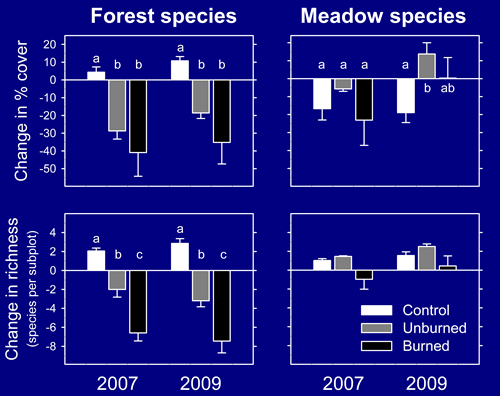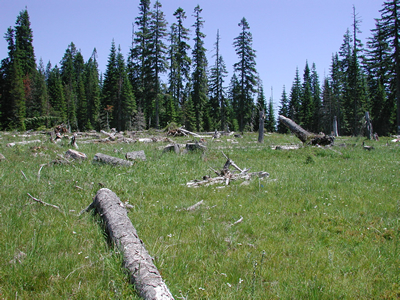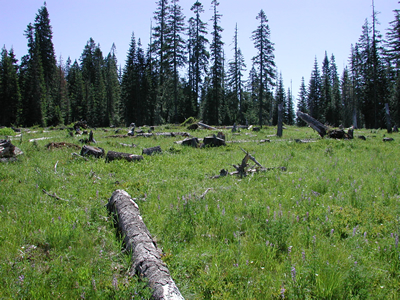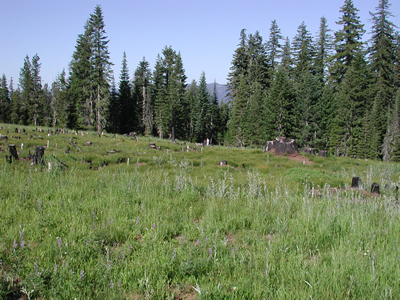|
Q1. Is tree removal sufficient to promote the abundance or diversity
of native meadow species? Are there additional ecological benefits
of fire?
Tree
removal, with or without burning, benefited meadow species at the
expense of forest herbs (figure, below: right column; photos
below). Meadow species responded positively to tree removal immediately
(2007) for richness and within 3 yr (2009) for cover.
Forest
herbs declined dramatically in cover and richness, even in the absence
of fire (figure, below: left column).
Fire
did not appear critical to shifting the dominance from forest to meadow
species. For most measures of vegetation response, effects of burning
were statistically no different from those of tree removal alone.
 |
| Changes
in cover and richness (species per subplot) of forest
and meadow species, one and three years after treatment.
Values are plot means (+1 SE, n = 3).
Letters denote significant differences among means within
years. |
|
|
Effects
of tree removal
and fire on forest herbs |
_Jul%206%202011_sm.jpg) |
| Shade-adapted
forest herbs. Note the leaf morphology and horizontal
orientation |
|
|

Achlys
triphylla |

Smilacina
stellata |
| The
same herbs after tree removal and burning. Note
the morphology and vertical orientation of leaves
exposed to the sun. |
|
|
 |
![]()
![]()
![]()
![]()

_Jul%206%202011_sm.jpg)





